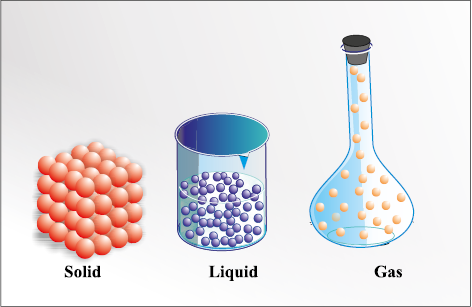Physics: Physics is the branch of science, which deals with the study of nature and properties of matter and energy.
The subject matter of physics includes heat, light, sound, electricity, magnetism and the structure of atoms. For designing a law of physics, a scientific method is followed which includes the verifications with experiments.
The physics, attempts are made to measure the quantities with the best accuracy.Thus, Physics can also be defined as science of measurement.
Applied Physics is the application of the Physics to help human beings and solving their problem, it is usually considered as a bridge or a connection between Physics & Engineering.
Physical Quantities: All quantities in terms of which laws of physics can be expressed and which can be measured are called Physical Quantities. For example; Distance, Speed, Mass, Force etc
UNITS: FUNDAMENTAL AND DERIVED UNITS Measurement:
In our daily life, we need to express and compare the magnitude of different quantities; this can be done only by measuring them.
Measurement is the comparison of an unknown physical quantity with a known fixed physical quantity. Unit: The known fixed physical quantity is called unit. OR
The quantity used as s measurement is called unit. For example, when we say that length of the class room is 8 metre. We compare the length of class room with standard quantity of length called metre.
Length of class room = 8 metre Q = nu
Physical Quantity = Numerical value × unit
Q = Physical Quantity
n = Numerical value
u = Standard unit
e.g. Mass of stool = 15 kg
Mass = Physical quantity
15 = Numerical value
Kg = Standard unit
Means mass of stool is 15 times of known quantity i.e. Kg.
Characteristics of Standard Unit:
A unit selected for measuring a physical quantity should have the following properties
(i) It should be well defined i.e. its concept should be clear.
(ii) It should not change with change in physical conditions like temperature, pressure, stress etc..
(iii) It should be suitable in size; neither too large nor too small.
(iv) It should not change with place or time.
(v) It should be reproducible.
(vi) It should be internationally accepted. Which we knows as SI UNIT.
Classification of Units:
Units can be classified into two categories.
• Fundamental • Derived
Fundamental Quantity:
The quantity which is independent of other physical quantities.
In mechanics, mass, length and time are called fundamental quantities.
Units of these fundamental physical quantities are called Fundamental units.
e.g. Fundamental Physical Quantity Fundamental unit Mass Kg, Gram, Pound Length Metre, Centimetre, Foot Time Second
1.LENGTH-meter
2.MASS-kg
3.TIME-second
4.TEMPERATURE-kelvin
5.CURRENT-amphere
6.AMOUNT OF SUBSTANCE -mole
7.luminous intensity-candela
8-angles-radian
Derived Quantity:
The quantity which is derived from the fundamental quantities e.g. area is a derived quantity.
Area = Length /Breadth = Length Length = (Length)2 Speed =Distance / Time =Length / Time The units for derived quantities are called Derived Units
SYSTEMS OF UNITS: CGS, FPS, MKS,
SI For measurement of physical quantities, the following systems are commonly used:-
(i) C.G.S system: In this system, the unit of length is centimetre, the unit of mass is gram and the unit of time is second.
(ii) F.P.S system: In this system, the unit of length is foot, the unit of mass is pound and the unit of time is second.
(iii) M.K.S: In this system, the unit of length is metre, unit of mass is kg and the unit of time is second. (iv) S.I System: This system is an improved and extended version of M.K.S system of units. It is called international system of unit.
With the development of science & technology, the three fundamental quantities like mass, length & time were not sufficient as many other quantities like electric current, heat etc. were introduced. Therefore, more fundamental units in addition to the units of mass, length and time are required. Thus, MKS system was modified with addition of four other fundamental quantities and two supplementary quantities.
Table of Fundamental Units
Name of Physical Quantity -Unit -Symbol-Length Mass Time Temperature Electric Current Luminous Intensity Quantity of Matter Metre Kilogram Second Kelvin Ampere Candela Mole m Kg s K A Cd mol .
Advantage of S.I. system:
(i) It is coherent system of unit i.e. the derived units of a physical quantities are easily obtained by multiplication or division of fundamental units. (ii) It is a rational system of units i.e. it uses only one unit for one physical quantity. e.g. It uses Joule (J) as unit for all types of energies (heat, light, mechanical). (iii) It is metric system of units i.e. it’s multiples & submultiples can be expressed in power of 10.
Definition of Basic and Supplementary Unit of S.I.
1. Metre (m): The metre is the length of the path travelled by light in vacuum during a time interval of 1/299 792 458 of a second.
2. Kilogram (Kg) : The kilogram is the mass of the platinum-iridium prototype which was approved by the ConférenceGénérale des Poids et Mesures, held in Paris in 1889, and kept by the Bureau International des Poids et Mesures.
3. Second (s): The second is the duration of 9192631770 periods of the radiation corresponding to the transition between two hyperfine levels of the ground state of Cesium133 atom.
4. Ampere (A) : The ampere is the intensity of a constant current which, if maintained in two straight parallel conductors of infinite length, of negligible circular cross-section, and placed 1 metre apart in vacuum, would produce between these conductors a force equal to 2 10- 7Newton per metre of length.
5. Kelvin (K): Kelvin is the fraction 1/273.16 of the thermodynamic temperature of the triple point of water.
6. Candela (Cd): The candela is the luminous intensity, in a given direction, of a source that emits monochromatic radiation of frequency 540 x 1012 hertz and that has a radiant intensity in that direction of 1/683 watt per steradian.
7. Mole (mol): The mole is the amount of substance of a system which contains as many elementary entities as there are atoms in 0.012 kilogram of Carbon-12.
Supplementary units:
1. Radian (rad): It is supplementary unit of plane angle. It is the plane angle subtended at the centre of a circle by an arc of the circle equal to the radius of the circle. It is denoted by 𝜃. 𝜃 = l / r; 𝑙 is length of the arcand 𝑟 is radius of the circle
2. Steradian (Sr): It is supplementary unit of solid angle. It is the angle subtended at the centre of a sphere by a surface area of the sphere having magnitude equal to the square of the radius of the sphere. It is denoted by Ω.
Ω = ∆s / r2
Some Important Units of Length:
(i) 1 micron = 10–6 m = 10–4 cm (ii) 1 angstrom = 1Å = 10–10 m = 10–8 cm (iii) 1 fermi = 1 fm = 10–15 m (iv) 1 Light year = 1 ly = 9.46 x 1015m (v) 1 Parsec = 1pc = 3.26 light year Some conversion factor of mass: 1 Kilogram = 2.2046 pound 1 Pound = 453.6 gram 1 kilogram = 1000 gram 1 milligram = 1/1000 gram = 10-3 gram 1 centigram = 1/100 gram = 10-2 gram 1 decigram = 1/10 gram 1 quintal = 100 kg 1 metric ton = 1000 kilogram
DEFINITION OF DIMENSIONS
Dimensions: The powers, to which the fundamental units of mass, length and time written as M, L and T are raised, which include their nature and not their magnitude. For example Area = Length x Breadth = [ L 1 ] × [L1 ] = [L2 ] = [M0L 2T 0 ] Power (0,2,0) of fundamental units are called dimensions of area in mass, length and time respectively. e.g. Density = mass/volume = [M]/[L3 ] = [ M1L -3T 0 ]




















0 Comments:
Post a Comment